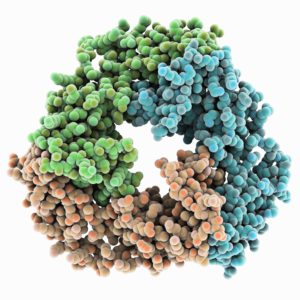BiobOx: A flexible tool for structural biology

Determining the structure and function of biological macromolecules requires a swathe of intricate techniques, which produce large amounts of data. Analysis of this data is often carried out using a disconnected group of distinct software packages. Workarounds are then required to improve workflow.
Researchers at the University of Oxford have developed BiobOx, a structural biology tool, which allows users to analyse and manipulate protein structures, incorporating data from electron density maps and collisional cross sections. BiobOx can assess structures from the atomic level, right up to complex, multimeric quaternary structures.
Structural biology
Macromolecules, such as peptides and nucleic acids, underpin the key functions of all cells. Due to this, determining the exact structure and function of these molecules is of the utmost importance. Studying the ways in which proteins fold (tertiary structure) and combine (quaternary structure) has led to the development of treatments for complex diseases and genetic disorders.
Information overload
In order to determine a macromolecular structure, structural biologists collect information from many sources both experimental and computational. Specialised software can be used to analyse specific components of this information but, at present, no tools exist that can integrate experimental and calculated data to produce new, testable hypotheses. Researchers at the University of Oxford have developed BiobOx, a fully integrated computational tool, which solves numerous problems in structural biology.
Opening the lid on BiobOx
BiobOx allows the user to manipulate and analyse key quantities at all levels of macromolecular structure (primary to tertiary structure). BiobOx can exploit these structures as sub-units to propose highly complex quaternary structures. Structures generated in BiobOx can also be verified using experimentally obtained electron density maps.
The key advantages of BiobOx are:
- Fully integrated structural biology software solution
- Generates protein assemblies based on custom architecture
- Calculates collisional cross-sections based on the electron density map
- Assesses the amino-acid cross linking distance as a solvent accessible path
Commercial licensees
BiobOx is currently available free for academic users. Oxford University Innovation Ltd is also seeking commercial licensees for BiobOx.
BiobOx is part of the Oxford Protein Analysis Software Suite (OxPASS), which provides the means to collate data from Mass Spectrometry, NMR and X-Ray crystallography experiments with unprecedented speed and accuracy. Click here for more information.
about this technology

